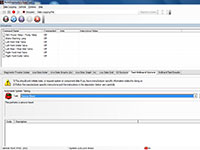Precautions & Brake Fluid Information
DISCLAIMER - Improper diagnosis and repair of brake systems can be potential harmful and result in injury or death. Please seek the help of a professional if you lack the skills, knowledge, understanding of, and/or confidence to perform such work.
CAUTION - Brake fluid is extremely damaging to paint; even a small amount of brake fluid will rapidly remove the paint on your vehicle.
Brake fluid is available in several types, each identified by their chemical compositions and material properties. The specifications for each brake fluid type is defined by the Society of Automotive Engineers (SAE). Glycol ether brake fluids (DOT 3 & 4) attract and disperse water evenly throughout the fluid. As a result, brake fluid has a limited shelf life; once it becomes contaminated with water, it is no longer suitable for use in any brake system.
The shelf life of brake fluid, especially in containers that have been opened and are no longer factory sealed, is typically thought to be around 12 months. Brake fluid that has been stored for more than 12 months should be properly discarded. For the sake of safety, we do not recommend storing brake fluid once the factory seal has been broken, nor using fluid that has been stored in a previously opened container. Additionally, brake fluid types cannot be mixed! Brake fluid requirements are ALWAYS listed on the cap of the master cylinder fluid reservoir AND the vehicle's owners manual. The listed brake fluid type is the only fluid that is compatible with your vehicle's brake system.
How to Bleed the Brake System on a Ford F-150
Click any thumbnail to view high resolution full-size image with details
• A brake bleeding apparatus (MityVac shown) with the appropriate fittings is required to bleed air from the brake system in the following procedures. There are numerous tools on the market that will accomplish the task at reasonable prices.
• Suspend the vehicle on appropriately rated jack stands and remove all 4 tires.
• If necessary, fill the brake master cylinder with new brake fluid. The fluid requirements for your brake system is listed on the master cylinder cap; brake fluid types cannot be mixed, thus you MUST use the correct fluid.
While bleeding the brake system, the master cylinder fluid level must be replenished frequently as air will be drawn into the brake lines if it is drained completely. Leave the master cylinder cap OFF while bleeding the brake system.
• Locate the bleed valve on the brake caliper furthest from the brake master cylinder (passenger side rear brake). Attach the bleeding apparatus hose to the bleed valve on the brake caliper.
• Pump as necessary to create ~ 15 psi of vacuum in the hose. Slowly open the bleed valve with an appropriate flare nut wrench and allow air/fluid to be drawn into the brake bleed apparatus canister. As the vacuum in the line approaches 0, close the bleed valve one the brake caliper and repeat the aforementioned process. Drain the fluid canister as required, typically after several bleed cycles. Do not reuse any old fluid removed from the brake system.
• Bleed the line until all air is removed and only fluid is present in the hose (do not forget to continuously replenish the master cylinder fluid reservoir with clean brake fluid; do NOT add used brake fluid drawn from the lines to the master cylinder reservoir).
• Large bubbles spread far apart and/or minimal fluid flow represents large quantities of air being removed from the system. As air in the lines is displaced with fluid, the bubbles will shrink in size and become closer together.
• Very small bubbles present in an otherwise solid flow of brake fluid represents a leak from the bleed orifice or the fitting(s) used to attach the bleed tool. It is difficult and rare to avoid not drawing some amount of air from the bleed valve while performing these procedures. After identifying this condition, bleed 2 to 3 additional times than close the bleed valve.
• These large bubbles indicate that air is still being removed from the brake lines. These bubbles need to disappear or become extremely small (see aforementioned description) for the brake line to be considered bled with any degree of confidence.
Repeat the bleed procedures for the driver side rear, passenger side front, and driver side front brake calipers. The system must be bled in this order, starting with the caliper that is the furtherest distance from the master cylinder and ending with the caliper that is nearest the master cylinder.
• After bleeding all 4 calipers, reinstall the master cylinder cap and test the brake system by depressing the brake pedal several times. If the brakes are spongy, do not reach reasonable pressure, and/or the pedal goes to the floor before building pressure, repeat the aforementioned procedures. It is not uncommon to need to repeat these procedures 2 to 3 times for each caliper.
• Brake fluid that is dark in color, contains particulates, or that has a greenish tint should be replaced as these are signs of contamination. Old brake fluid WILL ultimately lead to failure of 1 or more components of the ABS system.
• A special procedure is required if the ABS hydraulic control unit is being replaced. A "service bleed" is required as air will remain trapped in certain cavities of the HCU. A scantool with this functionality (such as AutoEnginuity, shown) is required to perform this procedure. Note that this is not required unless the HCU has been replaced. After completing the service bleed, re-bleed the system using conventional methods to ensure all air is removed from the brake lines. For more information about the service bleed, refer to your scantool literature as the feature is initiated differently with each device.









